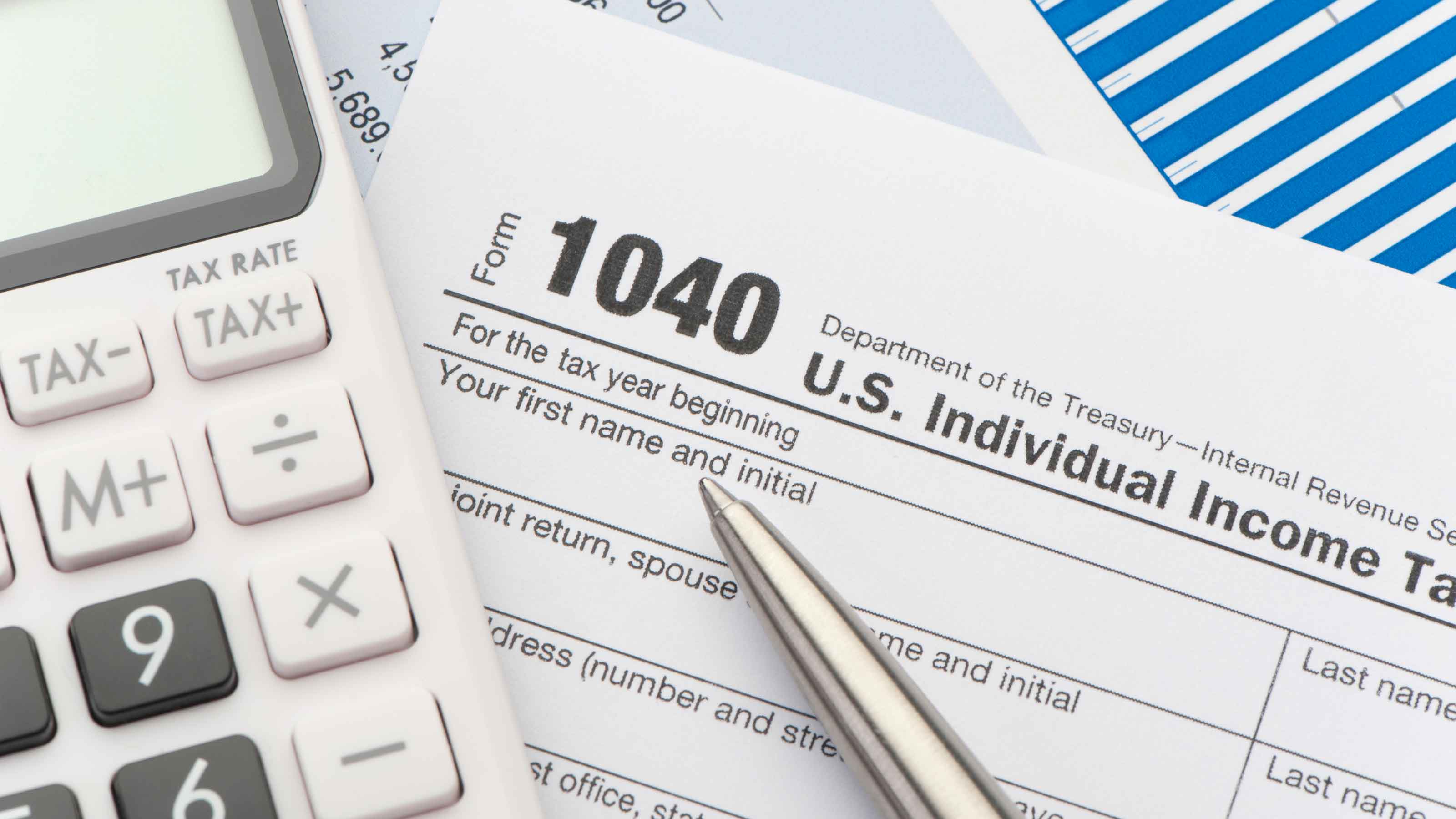Midyear Strategies to Cut Your 2016 Tax Bill
If you're looking for something to do this summer, focus on reaping financial rewards in 2016 with these tax planning strategies.


Okay, the pain of tax-return time should be subsiding. And it’s months before you need to start thinking about year-end maneuvering to give yourself the upper hand over Uncle Sam next spring. But rather than dream of a lazy summertime snooze in a hammock, get revved up about the financial rewards you can reap with some down-and-dirty tax planning.
Close the books on 2015. First things first: If you filed for an extension to complete your 2015 tax return, shake off the notion that you’ll wait until mid-October to finish the job. The extended deadline this year is October 17 because the 15th falls on a Saturday, but that’s no reason to procrastinate. By now, you should have received late K-1s showing partnership income as well as any corrected 1099s. No more excuses.
The IRS’s free-file program, which gives taxpayers free access to commercial return-preparation software, is still available for 2015 returns. If your adjusted gross income is $62,000 or less, check it out at www.irs.gov.

Sign up for Kiplinger’s Free E-Newsletters
Profit and prosper with the best of expert advice on investing, taxes, retirement, personal finance and more - straight to your e-mail.
Profit and prosper with the best of expert advice - straight to your e-mail.
If you have a refund coming, the sooner you file, the quicker you’ll get your money. If you owe more than you paid with your extension request, settling the debt now will limit the interest and penalties demanded by the IRS.
Before you pay any failure to file or failure to pay penalty, check to see if you qualify for “first-time abatement” relief. The IRS can waive the penalties if you filed and paid on time for the previous three years and have paid, or arranged to pay, the taxes due for 2015.
Speaking of your 2015 return, consider whether the bottom line is sending an action memo to you. If you got a big refund, maybe you should adjust your withholding, if you’re still working, or your estimated tax payments for 2016 if you’re paying on investment and retirement income. The average refund so far this year is $2,732, just a bit above last year’s. That’s about $225 a month. If your financial situation is similar, you could be racking up a big refund for next spring.
Wouldn’t you rather have your money as you earn it? If so, file a new W-4 form with your employer to claim one or more extra allowances. That will cut withholding. Our easy-to-use tax withholding calculator can help you set the appropriate number. Conversely, if you owed a bundle when you filed your tax return, you may need to cut withholding or bump up the estimated payments figured on Form 1040-ES.
Boost retirement savings. The maximum contribution for 401(k) and 403(b) plans remains the same as last year: $24,000 for those age 50 and older at the end of the year and $18,000 for younger workers. If you’re not maxing out, consider whether you can afford to save more.
If you opt for a traditional, pretax account, boosting your contribution won’t put a dollar-for-dollar dent in your take-home pay. If you’re in the 28% bracket, for example, adding an extra $500 a month to your 401(k) will cut your take-home by just $360.
If your company offers the Roth option, contributing after-tax dollars would cost you the full $500 in this example . . . but the payoff would be tax-free withdrawals of both contributions and earnings in retirement (see: When It’s Time to Tap a Roth 401(k) for more).
If you’re at the limit for your company plan, don’t forget that you can contribute to an IRA as long as you’re still working. You can contribute $6,500 ($5,500 if you’re under 50) to either a traditional or Roth IRA, or a combination of the two. Contributions to traditional accounts are fully or partially deductible, unless you’re covered by a company plan and your adjusted gross income exceeds $71,000 on a single return or $118,000 on a joint return. Note, though, that deposits to traditional IRAs are not permitted beginning in the year you turn age 70 1/2.
There are no age restrictions for nondeductible contributions to Roth IRAs, but there are income limits. The right to contribute to a Roth is phased out as income rises between $117,000 and $132,000 on a single return and from $184,000 to $194,000 on a joint return.
Although you generally must have earned income to contribute to an IRA, if your spouse isn’t working, you can make a deposit to a spousal IRA for him or her, as long as you have enough income to cover the contribution.
Deal with RMDs. The first baby boomers reach age 70 this year, which means hundreds of thousands more IRA owners will need to take required minimum distributions for 2016. Regardless of whether it’s your first distribution or not, the RMD is based on the balance in your IRAs at the end of 2015. The total is divided by a factor provided by the IRS in Publication 590-B. (For most IRA owners, the divisor is 27.4 for someone who turns 70 this year, for example, and 18.7 for someone who turns 80.)
The later in the year you take your required payout, the longer your money gets to grow in the tax-sheltered environment. If 2016 will be your first RMD, you can postpone the withdrawal to as late as April 1 of next year; otherwise, December 31 is the deadline. If you can choose between this year and next, consider your expected tax brackets in each year and how adding the RMD to your taxable income might affect the taxation of your Social Security benefits and your Medicare premiums.
Two points about RMDs: First, you don’t have to spend the money; you can transfer it to a taxable account. Second, you can always take more than the RMD if you need to.
Or you can give it away. Congress has made permanent the provision that permits IRA owners age 70 and older to transfer up to $100,000 from their IRA directly to a charity. Such transfers count as your RMD, but the money does not show up in your taxable income. In the past, such gifts were usually made at year-end because Congress habitually let this break lapse and revived it at the end of the year. Now, you don’t have to wait. If such generosity is in your plans, contact the charity to arrange the gift.
Make the most of generosity. Giving away an RMD isn’t the only potentially savvy way to make a donation. If you are planning a significant gift to your church, synagogue, alma mater or other charity, don’t automatically reach for your checkbook. Turn to your portfolio instead.
The law has a special rule to encourage gifts of appreciated property, such as stocks, mutual fund shares or real estate. As long as you have owned the asset for more than a year, you can deduct its full market value rather than just what you paid for it. And neither you nor the charity have to pay tax on the appreciation while you owned it.
Because it can take a while to arrange for the transfer of ownership, now is a better time to plan such gifts than as part of a year-end tax-planning frenzy. (Never give away property that has declined in value. You’re better off selling, claiming the capital loss on your tax return and then donating the proceeds of the sale for your charitable write-off.)
Make gifts to the family. You can give up to $14,000 this year to any number of individuals without having to worry about the federal gift tax. If you and your spouse join in the gift, the limit rises to $28,000 per person . . . or $56,000 to a couple. If you are planning significant gifts to children or grandchildren, consider using appreciated assets rather than cash.
Let’s say you and your husband want to give your son and his wife $50,000 for the down payment on a house. Because that’s under $56,000, you wouldn’t even have to file a gift tax return. But instead of cash, let’s say you give the children $50,000 worth of stock that you paid just $30,000 for years ago. If you sold the stock, you’d owe capital-gains tax on $20,000.
But by giving the shares away, you also give away that tax bill. Your tax basis transfers to the children and, if they’re in a lower tax bracket when they sell the shares, the extended family saves some money on the $20,000 profit. If the children are in the 10% or 15% bracket, in fact, at least part of the gain would be taxed at 0%.
Beware, though, that the kiddie tax can put the kibosh on these savings if you’re making gifts to grandchildren. For children under age 19 (or under 24 if they are full-time students), investment income in excess of $2,100 this year will be taxed at their parents’ rate, not their own.
Move to a new state? If this summer brings a move to a new state, brace yourself for a slew of tax changes. Sure, Uncle Sam’s rulebook stays the same, but state income, sales and property taxes vary widely. Differences can be particularly surprising when it comes to how states tax retirement income and special property tax breaks for retirees. Study the estate and inheritance tax landscape, too.
Getting up to speed quickly on new rules and regulations will pay off. For an overview of how different states tax retirees, check out our Retiree Tax Map.
Get Kiplinger Today newsletter — free
Profit and prosper with the best of Kiplinger's advice on investing, taxes, retirement, personal finance and much more. Delivered daily. Enter your email in the box and click Sign Me Up.

-
 This One Area of Americans' Retirement Readiness Gets a Bad Grade
This One Area of Americans' Retirement Readiness Gets a Bad GradeMillions of Americans score poorly on retirement readiness due to this Achilles' heel. Are you prepared?
By Christy Bieber Published
-
 REAL ID Deadline: What You Need by May 7, 2025
REAL ID Deadline: What You Need by May 7, 2025Worried about needing a REAL ID soon? Learn more about the requirement, how to get your ID and valid REAL ID alternatives.
By Laura Gariepy Published
-
 Kiplinger's Tax Map for Middle-Class Families: About Our Methodology
Kiplinger's Tax Map for Middle-Class Families: About Our Methodologystate tax The research behind our judgments.
By David Muhlbaum Published
-
 Retirees, Make These Midyear Moves to Cut Next Year's Tax Bill
Retirees, Make These Midyear Moves to Cut Next Year's Tax BillTax Breaks Save money next April by making these six hot-as-July tax moves.
By Rocky Mengle Published
-
 Estimated Payments or Withholding in Retirement? Here's Some Guidance
Estimated Payments or Withholding in Retirement? Here's Some GuidanceBudgeting You generally must pay taxes throughout the year on your retirement income. But it isn't always clear whether withholding or estimated tax payments is the best way to pay.
By Rocky Mengle Published
-
 How to Cut Your 2021 Tax Bill
How to Cut Your 2021 Tax BillTax Breaks Our guidance could help you claim a higher refund or reduce the amount you owe.
By Sandra Block Published
-
 Why This Tax Filing Season Could Be Ugly
Why This Tax Filing Season Could Be UglyCoronavirus and Your Money National Taxpayer Advocate Erin M. Collins warns the agency will continue to struggle with tight budgets and backlogs. Her advice: File electronically!
By Sandra Block Published
-
 Con Artists Target People Who Owe The IRS Money
Con Artists Target People Who Owe The IRS MoneyScams In one scheme, thieves will offer to "help" you pay back taxes, only to leave you on the hook for expensive fees in addition to the taxes.
By Rivan V. Stinson Published
-
 Cash-Rich States Lower Taxes
Cash-Rich States Lower TaxesTax Breaks The economic turnaround sparked a wave of cuts in state tax rates. But some say the efforts could backfire.
By Sandra Block Published
-
 The Financial Effects of Losing a Spouse
The Financial Effects of Losing a SpouseFinancial Planning Even amid grief, it's important to reassess your finances. With the loss of your spouse's income, you may find yourself in a lower tax bracket or that you qualify for new deductions or credits.
By Rocky Mengle Published